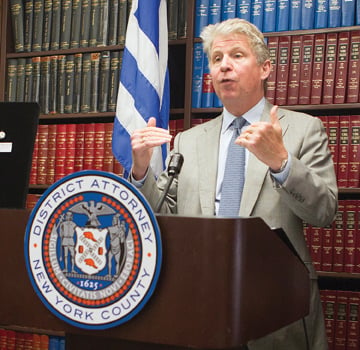Canadian corporations doing business in poor governance zones should take note
Forced labour and slavery in the supply chain are moving up the ladder of emerging risk concerns for Canadian and other multinational companies.
“Forced labour as an aspect of human trafficking is very much an issue for many governments around the globe, and they are increasingly putting expectations on corporations doing business in poor governance zones,” says Kevin Coon in Baker & McKenzie’s Toronto office.
The International Labour Organization, which devoted most of its main conference last year to the issue, estimates there are some 21 million victims of forced labour. According to Interpol, however, no more than 10 per cent of cases are ever reported.
To help remedy the problem, the UK government has introduced the Modern Slavery Bill, which is making its way through Parliament. In anticipation of its passage, the UK has appointed Kevin Hyland, the former head of the human trafficking unit of the London Metropolitan Police, as its first anti-slavery commissioner. His role is to improve law enforcement against forced labour.
The Modern Slavery Bill will compel annual disclosure of companies’ efforts to deal with slavery in their supply chains. In November 2014, Hyland threatened to expose companies not moving in that direction.
In the US, Cyrus Vance, the Manhattan District attorney, backed by financial institutions like J.P. Morgan, Western Union and Bank of America, has asked financial institutions generally to collaborate on sharing data that might identify human trafficking. He recently travelled to London to support a similar appeal aimed at European financial institutions by Thomson Reuters Foundation’s Trust Women conference. (Lexpert is published by Thomson Reuters.)
Monique Villa, chief executive of the Thomson Reuters Foundation, told Financial Times that since Vance first engaged the issue in early 2014, banks had incorporated software changes that would help detect human trafficking or forced labour patterns, which they then passed on to law enforcement agencies. The collaboration, she noted, had resulted in more forced labour and slavery investigations.
While the Modern Slavery Bill is striking because of its name, Coon believes it is merely a continuum of social and government expectations that companies extend their corporate social responsibility beyond their own enterprises and even beyond their own supply chains. In Managing Corporate Supply Chains: Challenges & Successes in the Fight to Combat Forced Labour and Human Trafficking, presented at the recent Thomson Reuter Foundation’s Trust Women conference in London, Coon and his co-authors at Baker & McKenzie point out that California, which is the world’s ninth largest economy, enacted the California Transparency in Supply Chains Act in 2010.
“California has historically been a legislative leader in the area of consumer and environmental protection laws, and as evidenced by proposed reforms in other jurisdictions, its adoption of a supply chain transparency law will undoubtedly have a ripple effect,” the authors write.
It already has, it seems. In the US, President Obama issued an Executive Order requiring certain US federal contractors to create an “awareness program” aimed at preventing subcontractors down the supply chain from engaging in trafficking and requiring contractors to monitor, detect and terminate any subcontractor engaging in such activity.
The Canadian government has also actively taken up the human rights banner from a CSR perspective.
“For example, the government has announced that it will withhold Export Development Bank support around human rights issues,” Coon says. “In our market, that sort of thing is an important issue for the extractive industries and the institutions that lend money to them.”
From a legal perspective, forced labour engages labour law and employment, international human rights, and international labour standards issues. Coon, a labour and employment lawyer, says he spends 40 per cent of his time advising clients on how to deal with these issues on a global scale.
“In terms of mitigating the risk, companies should ask themselves whether they’re training staff on detecting and investigating exploitation or trafficking issues either in their own workforce or in their supply chain, whether they are being transparent about their supply chain, whether they have supplier codes of conduct and what they expect their suppliers themselves to do,” Coon says. “The key issue for a corporate end user – and an issue which many US-based companies are now confronting – is how deep the organization has to go into the supply chain with these initiatives.”





